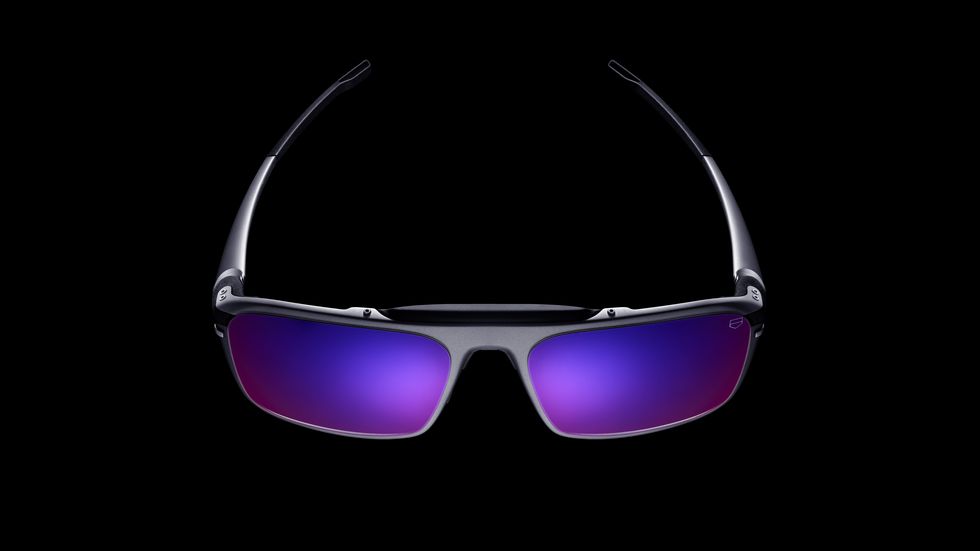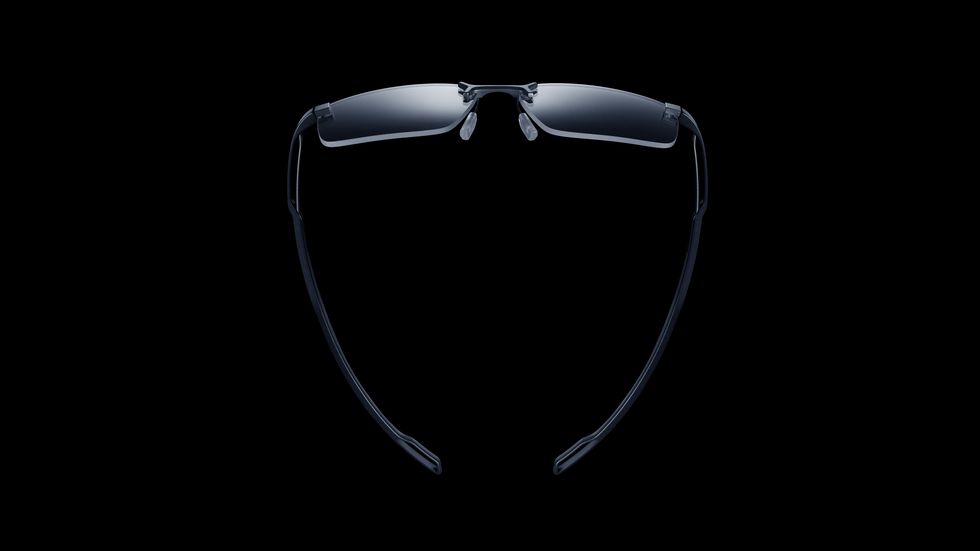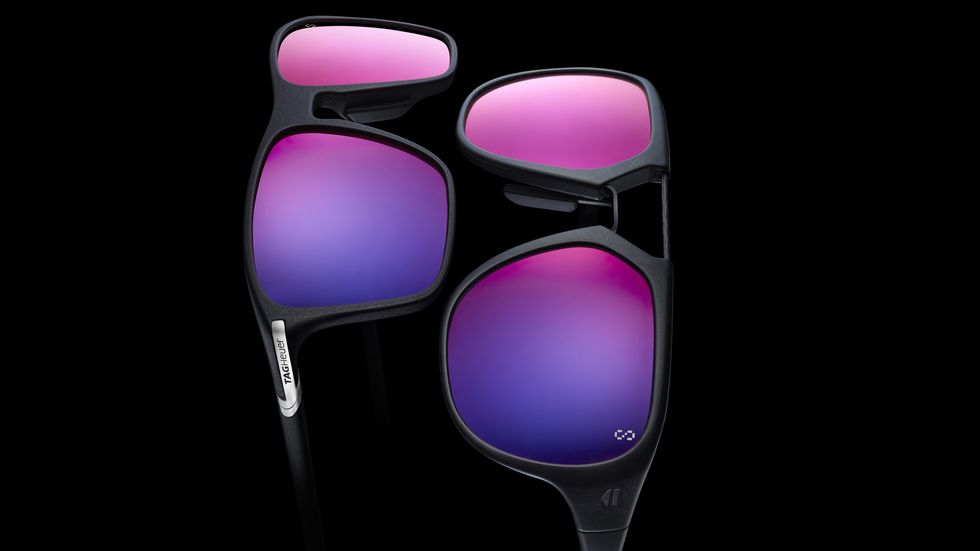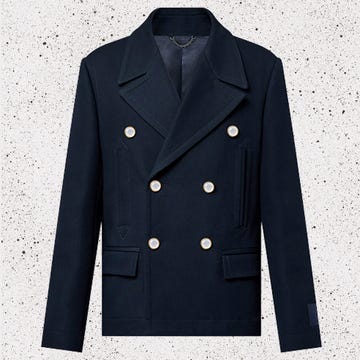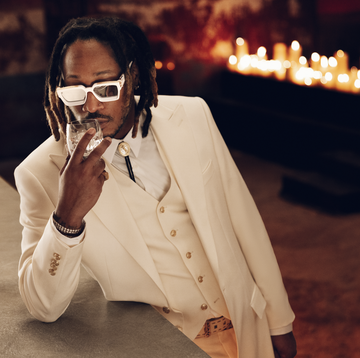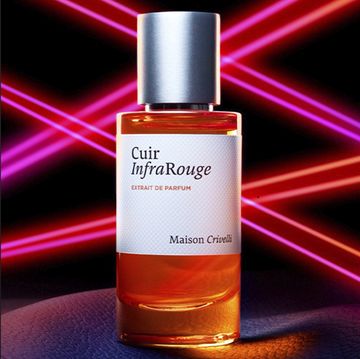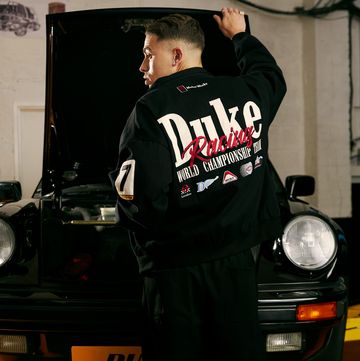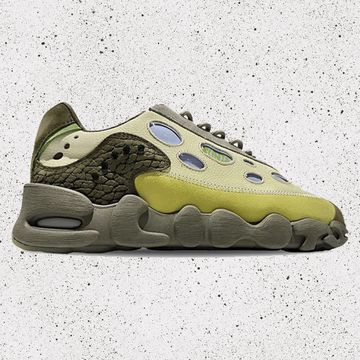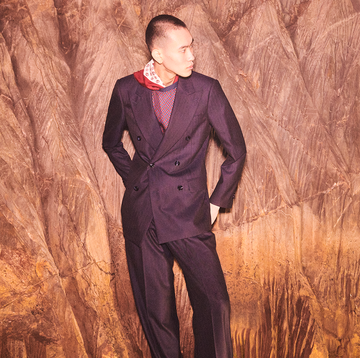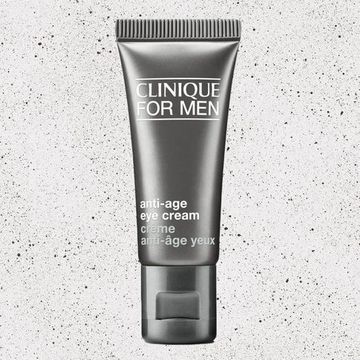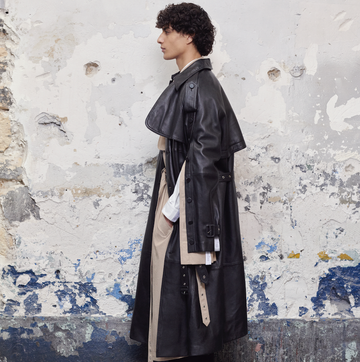Tag Heuer has announced an eyewear collection ‘inspired by the human body’.
The new line features five styles across eight styles in both sunglasses, sportswear and optical categories, with an emphasis on technical materials and lightweight, athletic designs.
The launch comes as a surprise from the Swiss watchmaker, has been four years in development and sees it enter the high-end eyewear segment in partnership with LVMH eyewear expert Thélios.
“This project is about performance and technology,” Renato Montagner, creative director of Tag Heuer Eyewear tells Esquire via video call from Switzerland.
“But first of all it is about new materials to create quality and precision. Quality is something that will give long-life to the project. It is about something tailor-made, so that it fits every face, in every different condition. So that was the challenge, and why this long period [in development].”
Tag Heuer Avant-Garde Eyewear collection, a nod to the ‘Techniques d’Avant-Garde’ acronym in the brand’s name, is comprised of the following five products lines – Boldie; Vigt-Sept; Shield Pro; Line and Flex.
The Bolide sunglasses features a semi-matte bio nylon transparent petrol frame, rubberised nose pads and comes in a brushed natural titanium with a solid grey and blue flash mask lens.
The Vigt-Sept sunglasses come in two styles with a semi-matte bio nylon/ carbon fibre black frame, matte stainless steel black metal hinges, and red or green violet polarised lenses.
The Line range combines ultra-light semi- matte bio nylon mixed with carbon fibre with a double bridge in matte Dyneema cable and titanium, and is available in smoke, red violet and green.
The Shield Pro line has been inspired by the sport mask shapes from the world of biking and comes in red violet, burgundy and green.
Flex are optical glasses in a a hingeless style featuring adjustable flexible temples in bio nylon mixed with carbon fibre and titanium details.
The range launches today, and has been developed in Swiss, French, Germany and Italian factories.
“We did not want to use disposable plastic,” Montagner says. “We started with recycled graphite, Dyneema, which is 15 times stronger than steel but incredibly light and used in things like kitesurfing and yachting. We have also worked with 3D-printed titanium, introducing a completely new technology of thin moulding.”
Any Tag Heuer fanboys hoping for specific watch model tie-ins is likely to be disappointed, however. There is no ‘Monaco’ edition of square sunglasses, or pair of glassbox ‘Carrera’ spectacles.
“But everything is connected because [Tag Heuer] is really a design brand about innovation,” says Montagner. “It is a state of mind about changing the rules, and an attitude about being disruptive. In the same way the brand is working with a product like synthetic diamonds [as used in its Plasma D’Avant Garde line], it was a new way of working with materials.”
Montagner says inspiration came instead from human biology.
“We patented a system called ‘tendons’. Really precise rubber ‘tendons’ inside the glasses that give flexibility within a rigid structure, the same way that human tendons work.”
Billed as ‘high-performance’ eyewear the line will be marketed at both professional and sportswear markets, with Tag Heuer ambassadors including American surfer Kai Lenny having input into its development.
Although Tag Heuer Avant-Garde Eyewear is a new venture for the company, it is not its foray into sunglasses – it previously entered the market in 2002.
All being well, Montagner says the plan to now produce collections each year – although he dismisses the idea this is the starting point for further brand extensions into accessories and apparel.
“I am here for the eyewear, and we are really, really happy [with this launch],” he says. “But there is a lot of work to do. Because we are looking at something really avant garde. Because we don’t need more products [just for the sake of them]. There is no need. Do people say ‘We need some new model of eyewear’. Not really, no. So it is really about the process. And making innovation the process.”

